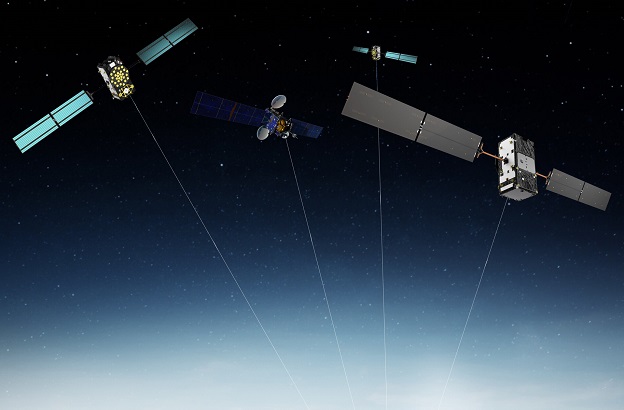
Image © GSA
ESA has chosen Thales Alenia Space and Airbus Defence & Space to separately build two families of spacecraft that will make up the second generation of Galileo navigation satellites.
The contracts for the 12 satellites total €1.47 billion and cover design and construction.
The current Galileo fleet comprises 26 first generation satellites, while 12 newer ‘Batch 3’ satellites are in production and testing. The first launch of Batch 3 satellites is scheduled for late 2021.
It is expected that the first of the new Galileo Second Generation (G2) satellites will be launched by 2025, boosting the accuracy provided to users from metre-scale to decimetre-scale.
The G2 satellites will feature:
- Electric propulsion systems
- Fully digital payloads that can be easily reconfigured in orbit
- Inter-satellite links that will enable each satellite to cross-check its performance, reducing dependency on the availability of ground installations.
- More powerful navigation antennae
- Advanced jamming and spoofing protection mechanisms
- More precise atomic clocks
The G2s will also have some communications capabilities, including two-way communications with people in distress during search and rescue emergencies.
Plus, a new emergency capability will give authorities the ability to issue warnings to people in danger areas, such as during tsunamis or earthquakes. These warnings would be provided independent of telecommunication providers, using Galileo navigation signals as a one-way messaging service.
The Galileo system will be operated by the EU Agency for the Space Programme, EUSPA, based in Prague. The two bodies are partnering on the development and operations of Galileo, while ESA is responsible for the design, development, procurement and qualification of the satellites and the ground infrastructure on behalf of the European Union.
Stay up to date by getting stories like this delivered to your inbox.
Sign up to receive our free weekly Spatial Source newsletter.












